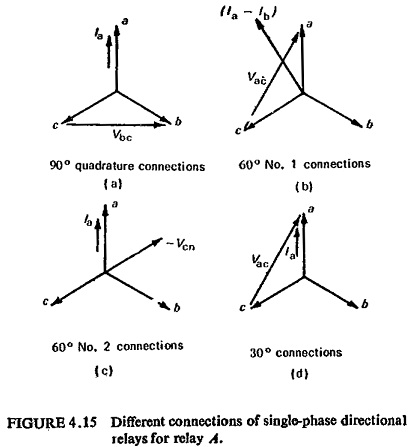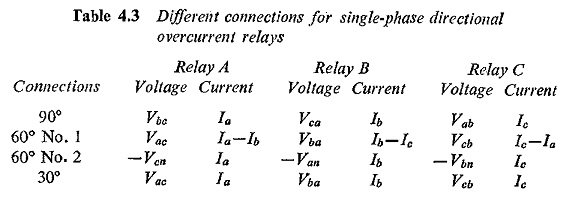Directional Overcurrent Relays in Power Systems:
Directional Overcurrent Relays in Power Systems – Relay connections must be made so that the currents and voltages applied to the relay during the various fault conditions which may arise on the protected circuit section afford the relay a positive and sufficiently large operating torque.
To achieve this for all types of faults the relays cannot be connected to operate on true watts since for some faults the voltage will be extremely small and also the power factor will be very small which will result in a negligibly small torque.
To overcome this, and thus ensure that sufficient torque is always available, each relay is supplied with current and voltage as described below.
The four most commonly used connections are illustrated in Table 4.3 and their vector diagrams of Directional Overcurrent Relays in Power Systems shown in Fig. (4.15).
Directional element connections are conveniently and popularly described in terms of the angle by which unity power factor (UPF) balanced load current flowing in the tripping direction leads the voltage applied to relay potential coil with due consideration given to the polarity of the relay coils.

